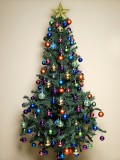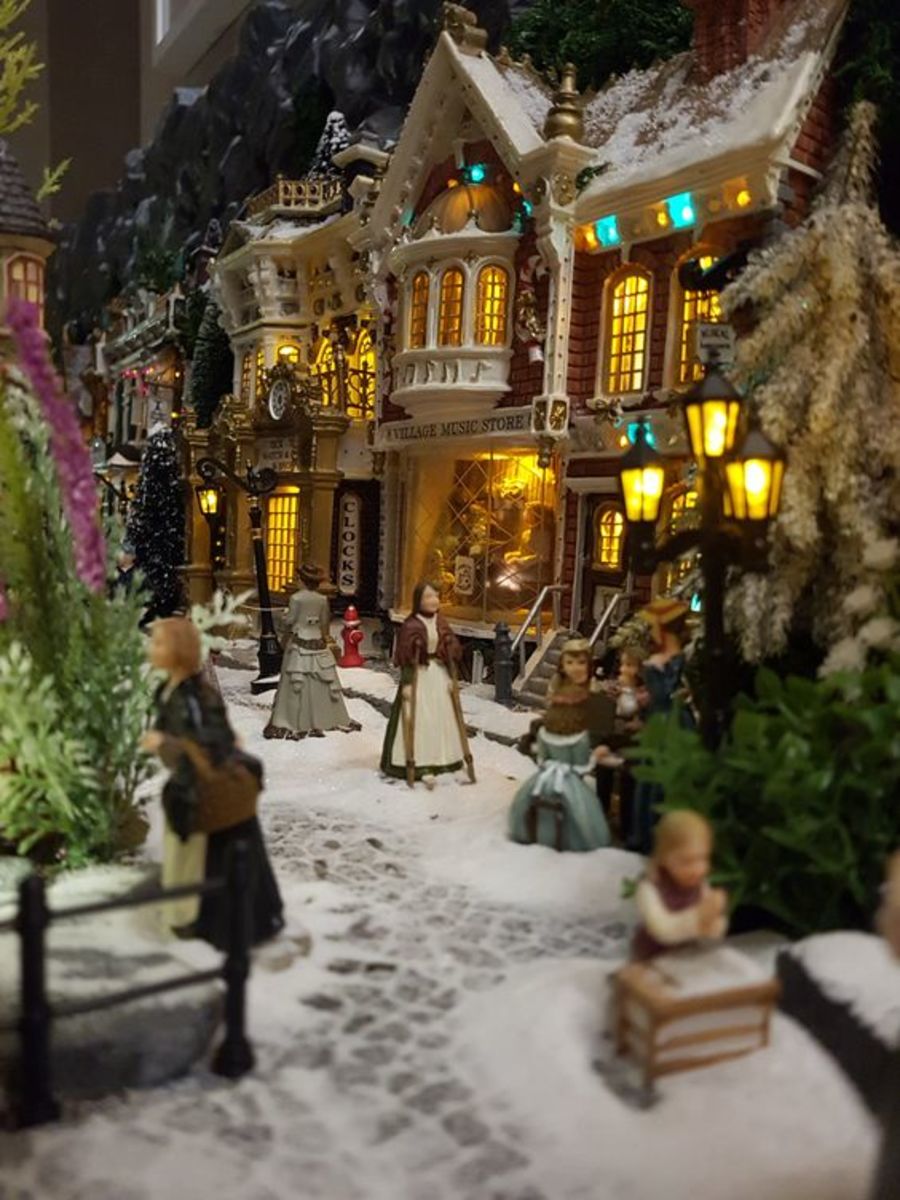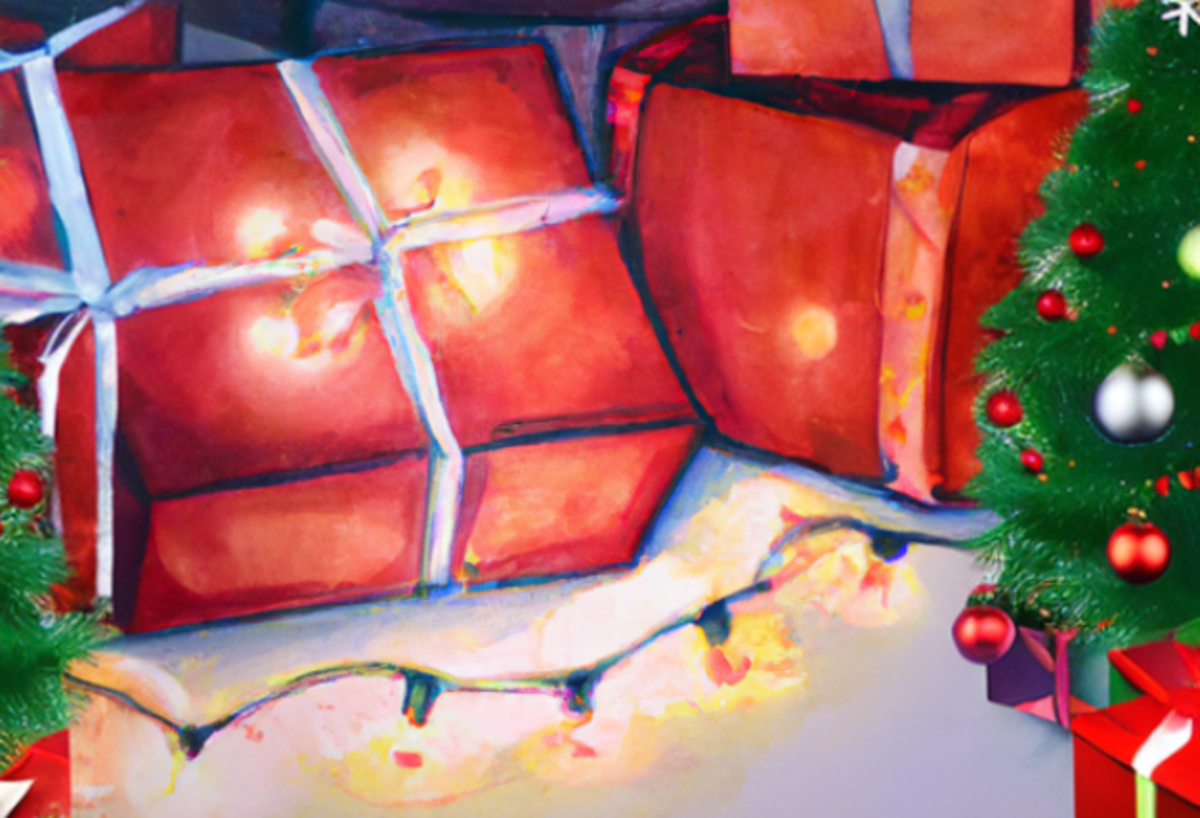Choosing The Perfect Christmas Tree

“I’ve killed it”, (A Charlie Brown Christmas , 1965) Charlie Brown said, when putting a single ornament on the puny little Christmas tree he specially picked for the Christmas Pageant. If only he had picked a stronger, more fitting tree, then maybe his friends would not have been so angry with his choice. When deciding to pick your Christmas tree, there are some things to consider, such as the leaf, twig, bark and form. I believe the best tree to pick for your holiday celebration is the Douglas fir. We will discuss two favorite Christmas trees, the Balsam Fir and Douglas fir, their similarities and differences. Hopefully, this will help you in making a decision for your perfect Christmas tree.
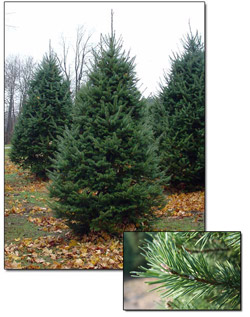
The Balsam Fir, as a Christmas tree, has several desirable properties. It has a dark-green appearance, long-lasting needles, and attractive form. The tree also retains its pleasing fragrance. It takes nine to ten years in the field to produce a 6-7 foot tree. The leaves of this tree are flattened needles, shiny dark green above and silvery-blue below. The lower branch needles generally occur as two-ranked (two rows along sides of the branch), 3/4 - 1 1/2 inches long, spreading and not crowded. On older branches, the needles are shorter and curved upward so as to cover the upper sides of the twigs. Individual needles are flat and may be blunt or notched at the ends. The twigs areyellow-green, later turning gray; the buds are reddish brown and resin covered; leaf scars are flat and rounded. The bark is a shiny silvery gray-brown, smooth except for numerous, raised resin blisters. The bark of the Balsam fir is thin, ash-gray, and smooth except for numerous blisters on young trees. These blisters contain resin, a sticky, fragrant liquid. Thus, the species is sometimes referred to as “blister pine” (McKinley, para. 4). When the tree reaches maturity, the bark may become up to ½ inch thick, red-brown and broken into thin scales. The form of the Balsam fir is a small to medium sized tree reaching 80 feet tall. They have a classic pyramid shape, often with a spindly top and a festive evergreen scent.
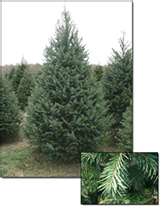
The Douglas fir has been the major Christmas tree species used in the Pacific Northwest since the 1920's (Tompkins, sec. 4.1). The Douglas fir is not related to the true firs; it is a large coniferous tree, also known as the “red fir”, belonging to the pine family (Encyclopedia of Science and Technology, 2004). The leaves of the Douglas fir are evergreen, single needles that lack woody pegs or suction cups, yellow-green to blue-green, 3/4 to 1 1/4 inches long, tips blunt or slightly rounded, very fragrant. Douglas firs have more soft, flat and short green needles with very good retention. When crushed, the needles give a sweet camphor smell. The twigs are slender and red-brown, with long, sharp, pointed, red-brown buds. The branches are spreading and drooping. The bark is smooth and gray on young stems, becoming thickened, fluted, red-brown with ridges, and deep furrows. The form of the Douglas fir is a pyramidal crown that is somewhat open. Nationally, it continues to be one of the most popular Christmas tree species. The Douglas fir is shipped to most of the states and is also exported to the Hawaiian Island, Guam and some Asian markets (Tompkins, sec. 4.3).
“As I listen to the tales of Christmases past and present, I am always amazed by how many memories and traditions revolve around the Christmas tree. This special symbol is near and dear to our hearts and the star of the show when it comes to holiday decorating.” (Garrity, 2010) Every season, we all want it to the best Holiday ever, precious memories to remember for the rest of our lives. As author Mary Garrity writes, the “Christmas tree” is a very important part of the holiday. Why not pick the very best tree for your home? The Douglas fir is top choice for your Christmas tree. The leaves of the tree are evergreen and will fill your home with a wonderful seasonal fragrance. The branches are grouped together tightly, as if they were specifically made to hold all of your holiday trimmings perfectly. Remember, this tree continues to be one of the most popular trees picked for the season, Nationwide. Not only is the Douglas fir the best pick for your Christmas tree, it happens to be the tree hand- picked by the First Lady to stand in the White House this holiday season.
What is your favorite Christmas Tree?
The Balsam and Douglas firs are two of the most popular picked Christmas trees in the Nation. Both are splendid picks for the holiday season. Both trees are beautiful and have a wonderful fragrance to fill your home. When deciding to pick your Christmas tree, remember there are some things to consider, such as the leaf, twig, bark and form. What are the most important characteristics of a Christmas tree for you? For me, the Douglas fir outshines the other trees and makes the perfect Christmas tree for any home. The branches are strong and the leaves radiate a wonderful aroma to fill your home. It is up to you which one you will choose.
Top Ten Christmas Tree Picks
#1 Fraser Fir
#2 Douglas Fir
#3 Balsam Fir
#4 Colorado Blue Spruce
#5 Scotch Pine
#6 Eastern Red Cedar
#7 White Spruce
#8 Eastern White Pine
#9 White or Concolor Fir
#10 Virginia Pine
References:
Douglas-fir. (2004). In McGraw-Hill Concise Encyclopedia of Science and Technology. Retrieved November 28, 2010 from
Garrity, M. (2010, December 3). Holiday memories revolve around the tree. Detroit News,p. H.14. Retrieved December 4, 2010, from ProQuest Newsstand. (Document ID: 2204172631).
McKinley, C. R. (n.d.). Balsam Fir. Retrieved November 28, 2010, from National Christmas Tree Association website: http://www.christmastree.org/trees/balsam.cfm
Mendelson, L. (Producer), & Melendez, B., Pratt, H., & Chiniquy, G. (Directors). (1965). A Charlie Brown Christmas [Motion picture]. United States: United Feature Syndicate, Inc.
O Christmas tree, O Christmas tree, how do I select thee? (2009, December 13). Daily Herald,3. Retrieved November 28, 2010, from ProQuest Newsstand. (Document ID: 1921060091).
Tompkins, D. (n.d.). Douglas Fir. Retrieved November 28, 2010, from National Christmas Tree Association website: http://www.christmastree.org/trees/douglas.cfm







